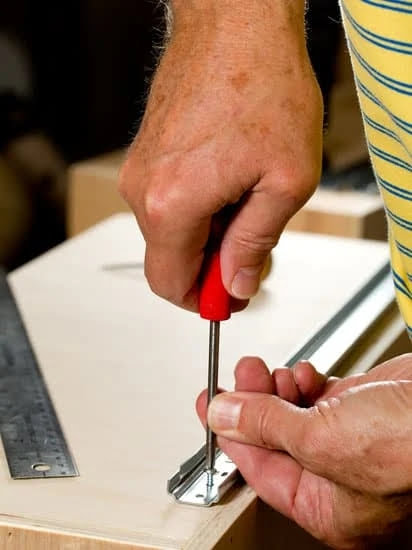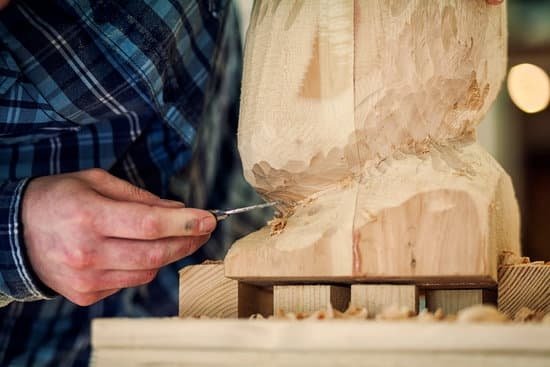When it comes to woodworking, proper storage of green wood is essential for achieving success in your projects. Whether you are a seasoned woodworker or just starting out, understanding the importance of storing green wood properly is crucial for both the quality and usability of the wood. In this article, we will delve into the reasons why proper storage methods are necessary and how they can affect your woodworking endeavors.
Green wood refers to freshly cut timber that still retains its natural moisture content. Unlike seasoned or kiln-dried wood, green wood requires special attention because it continues to undergo drying and shrinking processes over time. This means that if not stored correctly, green wood can warp, crack, or develop mold and mildew. As a result, its effectiveness and suitability for woodworking projects may be compromised.
Storing green wood outdoors poses even greater challenges as it is exposed to various elements. It is important to find a suitable location that provides protection from direct sunlight, rain, and excessive moisture while also allowing for proper ventilation. Additionally, organizing and stacking the wood in an efficient manner is crucial to maximize space and prevent any potential damage.
By mastering the art of green wood storage, you can ensure the success of your future woodworking projects. From constructing a sturdy storage rack to properly preparing the wood before storage and regularly maintaining its condition, implementing these practices will help preserve the quality and usability of your green wood. So let’s dive into the details of each essential aspect discussed in this article to help you become proficient in storing green wood outside woodworking.
Understanding Green Wood
Green wood, also known as freshly cut or unseasoned wood, refers to wood that has recently been harvested from a living tree. Unlike seasoned wood, which has been allowed to dry and stabilize over time, green wood contains a significant amount of moisture. This high moisture content poses several challenges when it comes to storing and using the wood for woodworking projects.
One of the key differences between green wood and seasoned wood is their moisture content. Green wood typically has a moisture content of 30% or higher, while seasoned wood generally has a moisture content of less than 20%. The excess moisture in green wood can lead to shrinkage, warping, cracking, and other issues if not properly addressed.
Proper storage of green wood is crucial because it directly impacts the quality and usability of the wood in woodworking projects. If green wood is not stored correctly, it can become more difficult to work with as it dries unevenly or develops mold and mildew. Additionally, improperly stored green wood may have reduced structural integrity and could be more prone to splitting or becoming damaged over time.
To ensure the success of your woodworking projects using green wood, it is important to give special attention to its storage needs. By understanding the characteristics of green wood and the challenges associated with its moisture content, you can take the necessary steps to store it properly.
In the next sections of this article, we will explore how to choose the right storage location for green wood and provide tips for preparing, organizing, maintaining, and determining its readiness for use in woodworking projects.
Choosing the Right Storage Location
Proper storage of green wood is crucial for woodworking success, as it directly impacts the quality and usability of the wood. When it comes to choosing the right storage location for green wood, there are several factors that need to be considered. By taking these factors into account, you can ensure that your green wood remains in optimal condition for future woodworking projects.
One of the key factors to consider when choosing a storage location for green wood is protection from direct sunlight, rain, and excessive moisture. Green wood is more susceptible to warping and cracking when exposed to these elements. Therefore, it is essential to find a spot that provides adequate shelter from sun and rain, such as under a covered patio or in a shed.
Proper ventilation is another important factor to consider. Green wood contains high levels of moisture, which can lead to mold and mildew growth if not properly ventilated. Make sure that the storage location allows for proper air circulation around the wood. This can be achieved by stacking the wood with sufficient space between each piece or by using a storage rack that allows air to pass through.
Accessibility and organization should also be taken into account when selecting a storage location for green wood. Having easy access to your stored wood will save you time and effort when starting new woodworking projects. Additionally, an organized storage area will help prevent accidents and allow you to quickly identify different types of wood.
| Factors | Considerations |
|---|---|
| Protection from elements | Avoid direct sunlight, rain, and excessive moisture |
| Ventilation | Ensure proper air circulation |
| Accessibility and organization | Easy access and organized storage area |
Constructing a Sturdy Wood Storage Rack
When it comes to storing green wood outside for woodworking projects, having a sturdy and well-designed storage rack is essential. A properly constructed storage rack not only provides a secure and organized space for your green wood but also helps maintain its quality and usability. In this section, we will provide a step-by-step guide to building the perfect storage solution for your green wood.
Step-by-Step Guide
- Materials and Tools Required: Before starting the construction of your wood storage rack, gather all the necessary materials and tools. You will need pressure-treated lumber, screws or nails, measuring tape, saw, drill with appropriate bits, level, and a square.
- Determine Size and Weight Capacity: Consider the amount of green wood you’ll be storing to determine the size of your storage rack. Ensure that you build it strong enough to support the weight of the wood. It’s important to distribute the weight evenly to avoid any sagging or collapsing.
- Frame Construction: Begin by constructing the base frame of your storage rack using pressure-treated lumber cut into appropriate lengths. Use screws or nails to securely attach all parts together. Make sure everything is level and square as you assemble the frame.
- Add Support Beams: To provide additional support and stability to your storage rack, add vertical support beams at regular intervals along the base frame. Secure them with screws or nails so that they are firmly in place.
- Install Shelf Slats: Cut pressure-treated lumber into slats of suitable length for your shelves. Space them evenly across each support beam on top of the base frame, leaving sufficient gaps between each slat for air circulation. Attach them securely using screws or nails.
- Finishing Touches: Give your wood storage rack a polished finish by sanding down any rough edges or surfaces. Apply an outdoor-friendly sealant or paint to protect the wood from weathering and ensure its longevity.
By following this step-by-step guide, you can create a sturdy and reliable wood storage rack that will effectively hold and protect your green wood. Remember to consider the size, weight capacity, and materials used to ensure durability. A well-constructed storage rack will make your woodworking projects more efficient and enjoyable by providing easy access to your green wood while maintaining its quality.
Preparing Green Wood for Storage
When it comes to storing green wood outside for woodworking projects, there are several techniques and best practices that can help ensure the quality and usability of the wood. Properly preparing green wood before storage is crucial in preventing issues such as cracking, warping, and decay. Here are some techniques and best practices to consider:
- Removing Excess Moisture: Green wood contains a high moisture content, which can lead to problems if not properly dried before storage. One way to remove excess moisture is through air-drying. This involves exposing the wood to natural air circulation in a location with good air flow. Another method is using a kiln or dehumidifier to speed up the drying process.
- Proper Drying Techniques: Depending on the type of wood and its thickness, different drying techniques may be required. Thicker pieces of green wood take longer to dry compared to thinner ones. It’s important to monitor the moisture content of the wood regularly using a moisture meter until it reaches an acceptable level for storage.
- Sealing the Ends of the Wood: Green wood tends to dry unevenly, which can cause cracks and splits along the ends of the boards. To prevent this, it is recommended to seal the ends of the wood with an appropriate end-grain sealer or wax. This helps slow down moisture loss from the ends, allowing for more even drying.
- Recommended Timeframes: The time it takes for green wood to dry varies depending on factors such as species, thickness, and environmental conditions. As a general guideline, softwoods typically take a few months while hardwoods may require several years of air-drying before they are ready for use.
By following these techniques and best practices in preparing green wood for storage, you can maximize its usability and minimize potential issues that may arise during woodworking projects. It’s important to remember that patience is key when it comes to green wood drying, as rushing the process can lead to compromised quality in the final product. With proper preparation and storage, you’ll be able to make the most out of your green wood for successful woodworking projects.
Organizing and Stacking Green Wood
Properly organizing and stacking green wood is essential for maximizing space and efficiency in your woodworking storage area. By implementing effective strategies, you can ensure that your wood is stored in a way that promotes air circulation, prevents warping, and allows for easy access to the desired pieces for your projects. Here are some tips to help you make the most of your green wood storage:
Firstly, it is important to arrange the wood in the storage rack carefully. One way to maximize space is by placing shorter pieces on top of longer ones. This not only saves space but also helps with air circulation between the pieces. Additionally, be sure to identify and separate different wood species, as this will help prevent confusion when selecting materials for specific projects.
Proper stacking is crucial for both preventing warping and ensuring efficient use of space. To promote air circulation, leave some gaps between the stacked pieces of wood. This allows moisture to evaporate evenly and reduces the risk of mold or mildew growth. It’s also a good idea to avoid overstacking or piling up too much weight on top of each other, as this can lead to instability or potential damage.
Managing varying sizes and shapes effectively is another aspect of organizing green wood storage efficiently. Smaller scraps can be grouped together using bins or containers, while larger boards should be placed horizontally or vertically depending on their length and thickness. By considering these factors, you can maximize space while keeping your wood accessible and safe.
Regular maintenance and monitoring are essential for ensuring the quality of stored green wood. Checking moisture levels periodically will help you identify any pieces that may need further drying before use. Additionally, it is important to inspect for signs of pest infestations, decay, or damage so that necessary actions can be taken promptly.
Overall, by organizing and stacking your green wood properly, you not only optimize storage space but also ensure the longevity and usability of your materials. Taking the time to arrange your wood thoughtfully, manage varying sizes effectively, and conduct regular maintenance will make your woodworking projects more successful in the long run.
Regular Maintenance and Monitoring
Proper maintenance and monitoring are essential for ensuring the quality of stored green wood. Without regular attention, wood can deteriorate, become infested with pests, or develop rot, rendering it unusable for woodworking projects. This section will discuss the necessary steps to take in maintaining and monitoring stored wood to preserve its quality.
Checking wood moisture levels periodically is crucial in preventing mold growth and decay. High moisture content can lead to the development of mold and mildew, which not only compromises the structural integrity of the wood but also poses health risks. Using a moisture meter, woodworkers can accurately assess the moisture levels of their stored wood. A moisture content below 20% is generally considered safe for woodworking purposes.
Pests and diseases can infiltrate stored wood if not properly addressed. Inspecting your wood regularly allows you to identify signs of pests such as termites or beetles, as well as indications of fungal infections or decay. If any issues are detected, prompt treatment is necessary to prevent further damage. Applying appropriate insecticides or fungicides can help control infestations and stop the spread of diseases.
Another important aspect of regular maintenance is re-stacking and reorganizing your wood as needed. Over time, certain pieces may become more susceptible to moisture or pests due to their positioning within the storage rack. By periodically rearranging your wood collection, you promote equal exposure to air circulation and sunlight, reducing the risk of degradation.
Maintaining proper care for stored green wood ensures that it remains in optimal condition for woodworking projects. By regularly monitoring moisture levels, addressing pest or disease issues promptly, and reorganizing your collection as needed, you will preserve the quality and usability of your stored wood for future use.
| Maintenance | Monitoring |
|---|---|
| Checking wood moisture levels | Inspecting for pests and diseases |
| Re-stacking and reorganizing wood as needed | Assessing signs of decay or damage |
Determining Wood Readiness
After properly storing green wood, the next crucial step in woodworking is knowing when the wood is ready to use. Working with wood that hasn’t reached its optimal moisture content can lead to issues such as warping, shrinkage, and cracking. Therefore, it’s essential to understand how to determine the readiness of green wood before incorporating it into your projects.
Testing Wood for Moisture Content
One of the most accurate ways to determine if green wood is ready for use is by checking its moisture content. A moisture meter can be used to measure the amount of water present in the wood. The ideal moisture content for most woodworking projects is typically around 6-8%.
Techniques for Checking Wood Stability and Readiness
Aside from measuring moisture content, there are other techniques that can help determine if green wood is ready for use. One method involves acclimating a small piece of wood from the same batch as the project piece.
This test piece can be left indoors under controlled humidity and temperature conditions for a period of time while monitoring its stability. If it remains stable without significant distortion or changes in shape, then it’s an indication that the larger project piece may also be ready for use.
Patience versus Rushing in Woodworking Projects
It’s important not to rush and begin working with green wood before it has fully dried and stabilized. While it may be tempting to expedite the process, attempting to work with unready wood will likely lead to long-term problems and unsatisfactory results in your projects. Patience is key when working with natural materials like green wood. Taking the time necessary for proper drying and testing will pay off in terms of quality and durability.
By following these methods and paying attention to the signs of readiness discussed above, you can ensure that your green wood is at an optimal level of dryness before incorporating it into your woodworking projects. Taking the time to properly determine wood readiness will result in more successful and satisfying outcomes, allowing you to make the most of your stored green wood.
Conclusion
In conclusion, proper storage of green wood is crucial for successful woodworking projects. Throughout this article, we have discussed the importance of storing green wood properly and how it can affect the quality and usability of the wood. We have explored the characteristics of green wood, its differences compared to seasoned wood, and the challenges in storing it.
Choosing the right storage location is essential when it comes to preserving the condition of green wood. Factors such as protection from direct sunlight, rain, and excessive moisture, as well as adequate ventilation to prevent mold and mildew growth, should be considered. Additionally, accessibility and organization play a role in maximizing convenience during woodworking projects.
Constructing a sturdy wood storage rack is a recommended solution for storing green wood outside. We have provided a step-by-step guide for building a DIY wood storage rack along with considerations for its size and weight capacity. Stability and durability are important factors to ensure the longevity of the rack.
Preparing green wood for storage involves removing excess moisture, properly drying the wood, and sealing its ends to prevent cracking. These techniques are vital in maintaining the integrity of the wood while it is stored. Organizing and stacking green wood effectively maximize space utilization and promote air circulation to prevent warping.
Regular maintenance and monitoring are necessary to ensure the quality of stored green wood. Checking moisture levels periodically, preventing pests and diseases, inspecting for decay or damage, as well as occasionally re-stacking and reorganizing the wood will help maintain its usability.
Determining when green wood is ready to use requires testing its moisture content and stability. Patience in allowing sufficient drying time is crucial in achieving successful woodworking projects.
By implementing proper storage practices for green wood, you can master this art form and increase your chances of success in future woodworking ventures. Remember to take into account all the key points discussed in this article – from choosing the right storage location to checking moisture levels periodically – if you want your projects to reach their full potential. With the right storage techniques, you can ensure the quality and success of your woodworking projects for years to come.
Frequently Asked Questions
How do you store wood outside for woodworking?
Storing wood outside for woodworking requires careful attention to prevent damage and degradation. Firstly, it is crucial to keep the wood elevated off the ground by using sturdy pallets or a raised platform. This helps to avoid moisture absorption and potential rotting.
Secondly, covering the wood with a waterproof tarp or storing it in a well-ventilated outdoor shed protects it from rain, snow, and excessive sunlight exposure. It is important to ensure that the cover allows for airflow to prevent condensation and promote drying. Lastly, regularly inspecting the stored wood for signs of decay or insect infestation ensures timely action can be taken if necessary.
How do you store green lumber?
When storing green lumber, which refers to freshly cut or recently harvested timber that has not been dried, certain precautions need to be taken to allow proper air circulation and prevent warping or molding. Firstly, stacking the lumber horizontally on evenly spaced stickers allows air to flow between each board while preventing them from directly touching one another.
The stickers should typically be placed every 12-16 inches along the length of each piece of lumber. Additionally, ensuring that there is adequate space between each stack of lumber promotes better air circulation and aids in reducing the risk of moisture retention that could lead to mold growth.
How do you store green wood for carving?
Properly storing green wood for carving involves similar principles as storing green lumber for woodworking but with some additional considerations specific to carving needs. Firstly, carving logs or green wood blocks can be kept outside under a covered area protected from direct rainfall but still allowing air circulation around them. Elevating them above ground level using pallets or similar structures helps prevent moisture absorption from below.
Secondly, coating the ends of freshly cut logs with a sealer such as wax or paint helps slow down moisture loss through these exposed surfaces while still permitting some evaporation. Additionally, monitoring the moisture content using a moisture meter allows carvers to determine when the wood is adequately dried before starting their carving projects, ensuring optimal results. Regularly inspecting the wood for any signs of decay, fungal growth, or insect activity is important to address any issues promptly and prevent them from spreading to other stored wood.

Hi everyone! I’m a woodworker and blogger, and this is my woodworking blog. In my blog, I share tips and tricks for woodworkers of all skill levels, as well as project ideas that you can try yourself.





